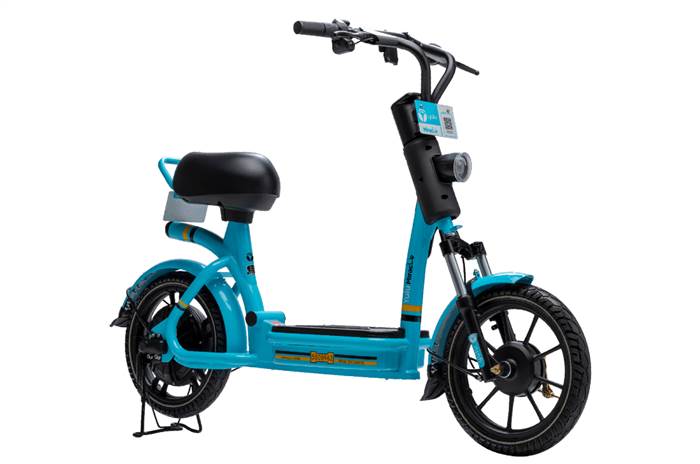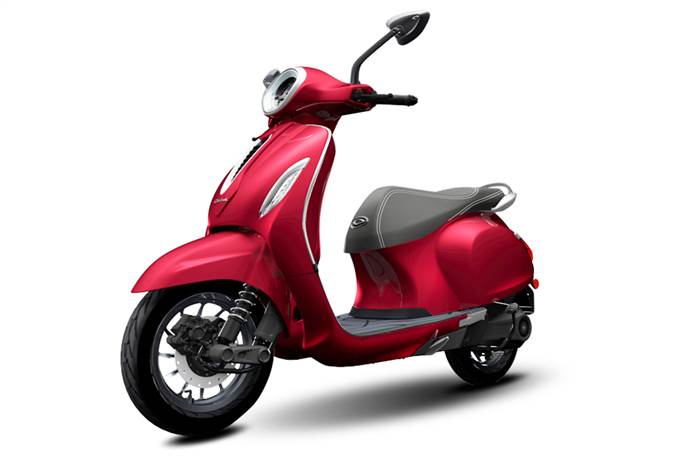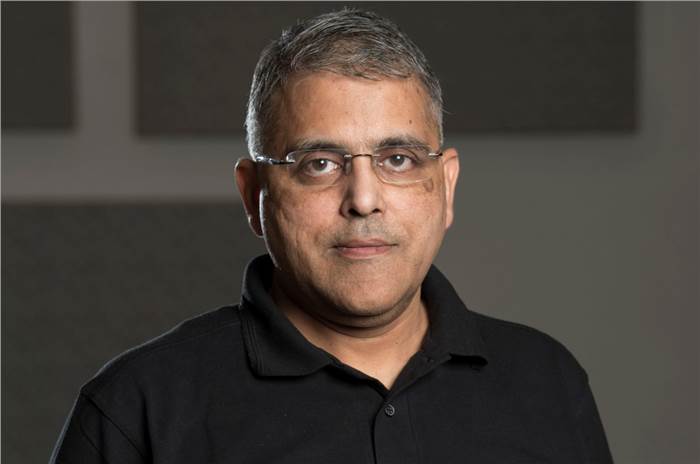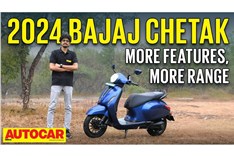Bajaj Auto says it is aiming at hitting 6,000 Chetak electric scooters in sales per month by the end of the current financial year (FY2023). In a recent conversation with Eric Vas, president of Urbanite at Bajaj Auto, we learnt quite a bit about Bajaj Auto’s short and long term plans in the EV space, as well as how the company perceives the current state of the EV market in India.
Bajaj Chetak EV is now almost fully localised
Exports for Bajaj Auto to begin in the next few months
Bajaj Chetak EV sales
Currently, Chetak electric scooter sales are around the 3,000-unit mark per month, a number which is restricted by supply issues more than anything else. Considering that the Chetak is sold through around 45 outlets across the country, Vas tells us that the number is quite good if you consider that some rivals have more retail outlets.
“The consensus on the semiconductor situation is that you will probably not see free supply return till the end of 2023, but we will have significantly increased supply in the interim and we would like to exit this financial year at the rate of about 6,000 units per month,” he says.
Government EV subsidies
Talking about the growing EV space since the launch of Chetak in late 2019, Vas says much of it is due to the government push. “A lot of the EV boom has been down to government intervention like the generous subsidy and PLI scheme,” he notes. “The industry will gain a momentum of its own, but how big and deep it will be is very difficult to establish right now, but my guess is it is here to stay.”
At the same time, he cautions that a reliance on subsidies is not a wise move in terms of product planning. “We appreciate the subsidy and the government has done a great job, but we must be realistic that subsidies will come down over time. That makes the strategy of putting large amounts of battery in the vehicle a difficult one to implement in the long term. Moreover, contrary to earlier expectations, lithium cell costs have only gone up in the last two years,” he adds.
Localising Bajaj EV products
Just like with every other manufacturer, the pandemic certainly hit Bajaj’s EV product development schedule, seeing a delay of six to nine months. Vas says, “That’s mainly on account of vendors not getting certain components, not being able to scale etc. We have a very strong pipeline planned and as Rajiv Bajaj mentioned, we’ll come out with a new product every year.”
He also explained that the company has taken a big step forward with the Chetak that is now almost fully localised, aside from the chips and battery cells. “The original Chetak EV had a lot of parts that were coming from global suppliers. Now the vehicle that has been sold since January this year has 100 percent Bajaj IP. Every part is Bajaj IP and that is a major step-change when we aspire to be a global player.”
He says it is important that the OE has a thorough understanding of the many parts and technologies. “We can’t make chips or batteries, but we’ve chosen where we want to make intellectual property investments and I think we are ahead of the curve compared to everyone else, certainly in India, and I would even go so far as to say that even globally there are only two or three manufacturers who are ahead of us in terms of being able to have the kind of IP resources,” he adds.
The Chetak is currently the most expensive of the mainstream EVs on sale in India, but Vas states that Bajaj wants to be a player that addresses many segments and cites the example of the upcoming Yulu micro mobility product that Bajaj is developing. Yulu is the last mile shared mobility start-up that Bajaj invested in in 2019.

“When we started micromobility with Yulu, the only source was getting the kits in from China. Yes, we localised some components. We learned very quickly that the Chinese product simply doesn't stack up to the Indian operating environment. Now with the kind of products that you will see Yulu putting on the road – you will see Indian OE’s delivering superior products.”
Since we were talking about Chinese EVs, I asked what Bajaj makes of the current messy market scenario with hundreds of low-cost EVs of Chinese origin being sold in India.
“Everyone says the Chinese will swallow us, I don’t think that will happen because in the two-wheeler space, they have never shown the ability to make a product that can really stand up to varied operating environments. They make products which work very well in their operating environment, and in all fairness to them, they have a big market so why not. But we’ve not seen them succeed too much globally and this has been historic even with ICE. We are absolutely confident that when we take our product globally, it will succeed.”
Bajaj EV ambitions
Bajaj certainly has huge aspirations in the EV space with aims to be one of the top players on a global scale. Vas says the brand wants to be the world’s largest EV player outside of China in two- and three-wheelers. “I think in all fairness it can happen in five or six years. I think we will have the product portfolio to do that.”
That is undoubtedly a huge journey from where Bajaj currently stands in the EV space; and the next piece in the puzzle will fall into place with the start of exports that should begin by the end of this financial year.








Comments
Member Login
Personal Details
No comments yet. Be the first to comment.